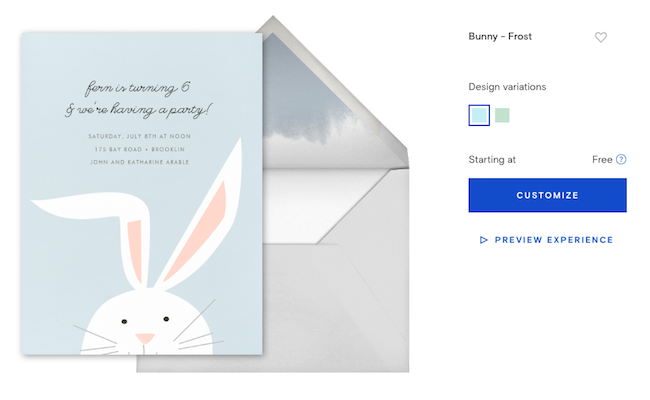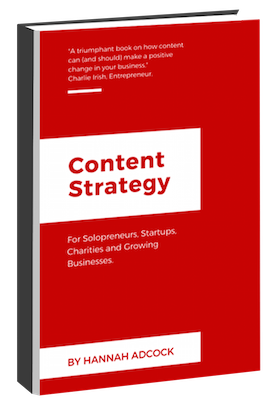How to measure and improve your SaaS content (and why you should bother)
People come to your website for the content. They heard a snippet of information about your product that has got their interest and they want to know more.
They want to see how your product can solve their problem, scratch a painful itch, or make them happier. And they want to know whether they can trust you and whether other people do too. And it is your content (not your product, or even your web design) that will help them at this crucial stage.
Because once your content sells them on the pain of their problem and the sheer relief of your solution, then they might actually sign up for it. Then they might give you money, particularly if your onboarding quickly helps them use and love your product. Then, if you’re really going for it, they might upgrade or repeat purchase.

Content is your friend. It’s not something to be avoided, like that train seat near the toilet.
Just look at the recent discussion around open-source JavaScript web framework Ember: that it has strong advantages over competitors but is failing to communicate these effectively. And unless they do something about this, Ember will continue to lose ground.
“As we discuss the future of Ember we need to recognize that without learning how to talk about Ember to the rest of the Javascript world, having any future becomes less and less of a guarantee.” Chris Freeman
In this post I’ll look at:
- How do you tell if your content is working effectively?
- What makes good content for SaaS products?
- How much content do you need?
The reading time for the whole article is approximately 15 minutes.
How do you tell if your content is working effectively?
I know many developers avoid or dislike content because it doesn’t offer such clear cut results as code (and I can empathise. I’m an amateur coder but at least when I get it right it usually works, which is pretty satisfying).
However, you can be logical about testing and improving your content. Here are two approaches:
The pain point approach: best when you know something isn't working
This is a good approach when you know something is blocking growth and are wondering what to do.
-
Start by writing down the pain points in your business based on your key performance indicators (KPIs): poor conversion rate of free to paid users, inadequate traffic, low engagement rate, low order value, high churn rate, and so on. Now at least consider whether you have a content rather than a product problem or superficial PR problem.
-
Dive into your metrics, trawl through your customer support, or reach out via a survey to uncover as much information as possible about this growth blocker. Talk to your fellow business owners or colleagues to see if they have any ideas.
-
Construct a working hypothesis: say you’re getting lots of customer support questions asking what you do + a high exit rate from your homepage + your customer survey shows lots of happy existing customers = potentially you’re doing a poor job communicating at a high level your product to new customers. So you need to improve your homepage not your product.
-
Then run a test. Change the offending content and see what happens to the relevant KPIs making sure that you don’t improve one KPI only to negatively affect a more important one. Aim for a fairly large content change instead of just a tweak here or there, unless you have a lot of traffic. This means your results are more likely to be statistically significant without you having to run them for weeks if not years.
-
If you see positive results it’s likely that your previous content was performing badly and your revised content is definitely better.
For more advice on running tests (including content tests) read Hacking Growth by Sean Ellis and Morgan Brown.
The content audit approach: best when you want an overall idea of whether your content works
This approach basically involves giving your content a thorough check-up, like you would your car, to check it is working properly and hasn’t any hidden problems.
This process can be partly automated using various tools like the Content Analysis Tool, but does involve a degree of legwork as you go through your content and grade it based on qualities such as whether it supports your current business direction, is up-to-date, actionable, and so on. You’d also collect metrics on each page so you build an effective picture of how your content is performing.
Your aim is to identify weak content that can be archived and revised, good content that can be imitated and content gaps that can be filled.
Although time consuming, a content MOT gives you some great insights into how your content is performing. Otherwise it’s easy to think your content is okay because it’s familiar. Or you just forget half the stuff you have on your site, even when it becomes outdated and is really off-putting to anyone who land on it.
Content audits need to be shaped to suit your business goals. However, here are a few tips:
- If you are pushed for time audit only some of your site (making sure you include content a few layers down)
- Use a crawling tool like Screaming Frog to identify all/most of your URLs, or use the Content Analysis Tool (CAT)
- Use a content audit template like this one as a base if you feel a bit overwhelmed
- Consider dividing your content into categories that have different analytic criteria: homepage, brochure pages, support content, blog content, onboarding content, and so on
- Collect data such as page views and conversion information, as well as information that requires you to make a judgement such as ‘overall page quality,’ ‘content findability,’ ‘visibility of next action,’ and so on

Your content audit should be customised to suit your business – and different types of content might need to be evaluated using different criteria
If you are running an early stage startup, you should also consider doing a competitor audit, particularly if you don’t have much content of your own. A competitor audit means you rank your competitor’s content so that you discover their content strengths and weaknesses. Most importantly, you learn how you can differentiate yourself.
Once you have a good idea of the strengths and weaknesses of your existing content, you can move on to content creation and editing.
What makes good content for SaaS products?
Generally speaking, content that gets people to take a revenue-linked action as soon as possible. You’ll need content for other tasks – for investors, job seekers, affiliates, partners, and so on – but this content is probably not high priority. Don’t let it get in the way of your core users taking business-critical actions.
But how can you write content that gets people to sign up to a free trial, request a demo, pay for an account, upgrade to a more expensive one or repeat purchase? Here’s how:
1. Get outside your own head
“I think customers will do this because I think this…”
Really?
Unless you have an amazing degree of empathy, you’ve probably forgotten what it’s like to have the problem you solve. And also what it’s like to come across your product for the first time.
You need to get in touch with people who are in pain and in search of a solution. Found out what they think and need.
Even if you really know some of your customers – particularly those that have been with you since the beginning – you need to be strategic about this knowledge, and then build on what you have.
You can do this in a number of ways:
Send out a survey
You can send out a survey to paying customers asking questions like:
- How would you describe this product to a friend (to find out: is this different to how I describe the product in my header copy?)
- What was going on at work when you signed up for this product (to find out: am I getting my value proposition right?)
- How would you describe your position in your company?(to find out: are we targeting the right people through our content)
- What feature couldn’t you live without? (to find out: am I prioritising the right benefits in our content?)
I prefer open-ended questions that give you interesting replies, even though these take longer to process. I also keep surveys very short. People are busy. Don’t bore them.
You could also send out a different survey to people who signed up to a free trial but didn’t convert asking questions such as:
- What challenge did you hope this product would solve? Did it? (to find out: is our content giving an incorrect idea of what we do)
- What would encourage you to sign up for a paid account? (to find out: do we need to improve our onboarding or are we targeting the wrong type of people?)
I advise separating the two surveys because you want more people who did convert and love your product. So find out what makes them tick as a matter of priority.

This survey question asked whether people wanted to download or stream long tech videos – and more people than expected favoured downloading
Talk to your customers
This one is easy to miss because you probably feel like you hear from your customers all the time. You are helping them do something through your support section. Or trying to face-to-face convert high-value clients or get your first 100 users.
This isn’t quite what I mean.
You need to find power users, basically, people who love your product, and get them on the phone. Then ask them a few simple open-ended questions such as:
- What was going on at work that they needed a product like yours?
- What challenge were they trying to solve?
- What other products did they look at?
- What made them choose yours?
- Did they talk to anyone else before signing up?
- What nearly stopped them signing up?
- What did they imagine their life would be like after using the product?
- What is their life actually like using the product?
Raid your support section
Your support section isn’t just a valuable resource in terms of working out whether your product has a bug, or whether you need a new feature. Or a pain in the proverbial, given how many people seem to ask questions that seem super obvious to you (the all-knowing founder).
It is also a great way of showing you who is using your product, whether they get your content, and what they need from you.
Go raid your support section, looking for valuable insights into:
- Who is using your product (those that pay; those that don’t and probably never will)
- Whether your content is failing to answer the questions of potential customers (do far too many people write to support basically asking what you do?)
- Whether people are using your product in ways you didn’t anticipate but are actually quite interesting
Snoop on your competitors
This is a particularly good option if you don’t have many paying customers.
See what people are saying about your competitors, not just on their websites, but on LinkedIn or Facebook groups, on Twitter, on Slack channels, on Reddit, in the comments sections of articles, or wherever.
See what they like, what they don’t and what language they use to talk about their problems and the competitor solution.
Then use this language to grab their attention through your content.

See what people are saying about your competitors (I was looking at personal safety apps)
If you’ve succeeded with any of this user research, it’s likely you have a fantastic amount of useful information just waiting to be used.
Now’s the time.
2. Unleash your customer knowledge
Don’t undertake customer research in a fit of enthusiasm and then leave it to moulder in an unloved file somewhere.
Unleash your customer knowledge.
Plan to create useful, specific content based on your research. For example, you could create case studies, which can be particularly valuable if you are early stage and need to work hard to show how and why people use your product.

This is an extract from a case study by Feature Upvote. It shows how one of their power users gets real value from their product.
You can also pull out quotations and images from these case studies to strengthen other marketing and sales content.
Plan to create infographics if you spot trends or have statistics that work well in a visual format (graphic tool websites like Canva mean you can create your own).
Or compile in-depth reports, PDF downloads, email sequences, or blog posts, sales brochures, or other content marketing that is valuable to your audience.
However, don’t just confine your content efforts to obvious channels like case studies and content marketing.
All your content should be informed by detailed and specific customer research including your landing pages, your customer support section, your onboarding and your checkout process, including microcopy.
Take a step back and reassess how your content works as a whole to persuade your targeted customers to buy (or sign up or download or whatever you want them to do).
Does all you content tell a good story?
Does it have what it takes to persuade sceptical and savvy people to say: “I need this product now!”
3. Tell a good story about your product
You’re probably software developers so I’m guessing you like logic. Things that work. Which may well be why content is high on your ‘this is a pain’ list and low on your ‘things I love doing’ list.
Being creative and creating quality content can’t be reduced to an algorithm (as yet, probably never). However, there are frameworks you can use to help you create effective content even if you’re not JK Rowling or George R.R. Martin.
Here are two frameworks you can use to tell a good story.
PAS technique
The PAS copywriting technique stands for Problem → Agitation → Solution.
hi there person with a problem. You’re not feeling great are you? Wouldn’t life be better if that wasn’t happening and you didn’t have to waste time thinking about this? And this? Well, you don’t have to worry about all that crap anymore. Our product does this. And improves your life in all these amazing ways. All these people trust it. You should too. Let’s go my friend. Just do this.
This technique can be really effective, although personally I don’t like content that is too negative or that slams competitors.
I think the former can just take people into a dark and aggravated place that makes them critical of your product – or just plain cross. The latter can simply make people sceptical and give your brand a ‘nasty’ flavour that isn’t helpful.
If you use PAS (and I sometimes do) I prefer not to let readers wallow in pain. I either show the problem in a fairly factual way or address the problem emotively but then quickly show what my product does and why it would benefit them.
For example, if I was creating a SaaS meal planning product for people with special dietary requirements I would say something like:
Problem: Fed up with spending hours browsing the internet for suitable recipes? And calories counting to make sure recipes suit your dietary requirements?
Agitate: You want to eat healthily/lose weight but meal planning is so time consuming and you often fall back on the same old recipes or junk ‘free from’ food?
Solution: We provide a personalised meal plan just for you, every day, so you can always eat healthily – and reclaim your time. We even suggest tasty options if you’re eating out, so you’re free to eat wherever and whenever you want.
FAB technique
The FAB copywriting technique stands for features - advantages – benefits, which reminds you to communicate benefits rather than just listing features.
Apple captured the benefit of the iPod by saying: ‘1000 songs in your pocket’ rather than, say, ‘1GB storage’.
For more on these techniques have a look at this blog article by Copy Write Matters or this one by Enchanting Marketing.
Both approaches can help you make sure all your content is helping to answer that key question: why buy (or switch) now?
A word of caution
A storytelling approach to content is great but not if you get carried away and start rambling. Give your customers the information they specifically need when they need it.
Never lose track of the fact that you should be answering key customer questions such as:
- What do you do?
- How do you do what you say you do?
- Why should I care?
- Do others care and trust you?
- How will you make my life better?
- Say I trust you a bit – what now?
Keep a note of what content converted you
Try and keep track of what it was that made you buy a product or service.
Did the content hit a nerve? How did it do this?
Did you have a go with the product and quickly find value, meaning you were happy to pay up?
Even if you didn’t end up buying something (because you really didn’t need it), you can add content to your scrapbook that you think is doing a great job.
Then when you need to create or revise your own content, you’ll have some best practice examples to inspire you.
I use Evernote to collect content that has impressed me.
How much content do you need?
If your product doesn’t cost much you can tell a short story – over a page or so – and probably still convert well, particularly if you offer a free trial so people don’t need to give you money up front.
However, if your product costs a lot you need to tell a more complex story over a lot of content, with room for diversions when your cautious or less informed customers need more information.

I worked with a boat club where customers would be parting with a sizeable amount of money if they signed up – so they needed a lot of content
A few boat club customers were motivated to sign up quickly (so we didn’t get in their way) but many needed to hear a story that covered how it worked, benefits, whether others cared, boat details, harbour details, pricing details, the social scene, training opportunities, and much more.
Only then would they get in touch to discuss a pricing plan or to arrange a visit.
Once they’d explored a lot of content.
And I mean a lot.
Which brings us to the next point:
Your content isn't just your homepage
Even if you have brilliant content on your homepage, or even on a few landing pages, your work isn’t done.
Far from it.
There is nothing more reckless than to spend sweat and tears getting people to your website only to lose them at the onboarding stage, or a few months down the line, or to fail to upsell them when you really should.
What you need to do, after getting people to take an initial action – such as signing up for a free trial or creating something for free – is to show them very quickly why your product is a must have. And for this you need great onboarding content.
You may know exactly how to use your product so it sings, but unless you communicate this effectively to strangers then you’ll struggle to convert trial users or curious customers to paying customers.
And this is a KPI that really matters.
So first work out what value users need to get from your product that makes it a ‘must have’ and that gets them invested in your product very quickly. Then keep your onboarding focused on getting people to take actions that give them tangible value.
Avoid wordy instructions if you can: show don’t tell is much more effective.
In this respect, Paperless Post do a great job.
I recently wanted to send out invites to my youngest son’s first birthday. I’d heard of Paperless Post so I went to their site, liked what I saw and selected ‘browse’ on the kid’s invites section. I saw a design I liked and selected it. Then I saw the ‘customize’ button.
Then I was off.
Before I knew it I had designed my invite and was reconciled to paying so many coins per recipient, for extras like an envelope and a backdrop.
Basically, I’d been onboarded.
I’d very quickly found value in the product, I’d been encouraged to spend time in creating something, even when I thought I’d just have a quick browse, and I was going to hand over money.
Good job people.

Before I knew it, I’d selected customize and had designed a birthday invite. And I’d only intended to have a quick browse.
If you don’t offer a free trial, or the opportunity for people to create something, then you can always try offering something like a demo or free limited access.
Make sure your content is prioritised to support these calls to action.
Don’t suddenly activate a chat window when someone is about to select ‘demo this product’. Or ask them to sign up to your newsletter.
Also, don’t forget content aimed at upgrading customers, encouraging repeat purchases or increasing lifetime value. You can increase revenue nicely if you increase the value to your business of existing customers.
Content isn’t just about attracting and converting new customers. It’s about retaining your old ones.
Good content techniques for customer retention include:
- Newsletters, emails and messages (to show product improvements)
- Free downloads and/or courses (to educate)
- Blog posts (to show authority)
- Excellent support (to help people get the most from your product)
- Excellent help articles (to help people get the most from your product)
What now?
If your sneaking suspicion that your content is underperforming has matured to alarm bells then this next sentence is for you.
It’s time to actually do something about your content. Now.
Set time aside now to see how your existing content is working by either the ‘pain point’ approach or the content MOT method mentioned above. Decide what content needs to be improved, how long it would take and what difference it would make. Prioritise accordingly.
Then, appraise your customer research. If it’s only in your own head then get it out of there. And do some more research. If you have lots of research already good on you. Use it.
Create new content to test. Test it and see what happens. Make sure the results are meaningful to your bottom line rather than to your vanity (wow, I have loads of site visitors! Shame they don’t seem to buy anything…)
Celebrate your content success. Then repeat.
Need help with assessing or improving your content? Get in touch: hannah@contentedstrategy.com
Content Strategy for Solopreneurs, Startups, Charities and Growing Businesses
This book will help you tackle 12 common business challenges including making sure you're reaching everyone who could be a customer, persuading people to buy from you and not a competitor, and how you can get your team to produce useful usable content. Read more about the ebook.
You'll learn
- How thinking strategically about your content will drive growth
- Practical tips on creating content strategy deliverables that will save you time and money
- How to create a content strategy for your company in 4 weeks
